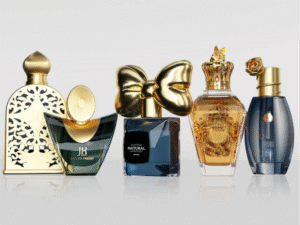As we step into 2024, the spirits industry continues to evolve, driven by changing consumer preferences, technological advancements, and a growing focus on sustainability. One area that has seen significant transformation is spirit bottle design, which plays a crucial role in shaping a brand’s identity and appealing to modern consumers. In this article, we’ll explore the Top 5 Trends in Spirit Bottle Design for 2024, offering insights into how these trends can help brands stay competitive and innovative.

1. Sustainability and Eco-Friendly Materials in Spirit Bottle Design
The shift toward sustainability is no longer just a trend—it’s becoming a necessity. With growing environmental awareness, consumers are demanding more eco-friendly options in the products they buy, and spirit bottle design is no exception. In 2024, the use of sustainable and eco-friendly materials in bottle manufacturing is one of the top trends shaping the spirits industry.
What is driving the trend toward sustainability in 2024?
There are several factors pushing brands toward adopting sustainable practices in their bottle design:
Consumer demand: More than ever, buyers are prioritizing eco-conscious products. A Nielsen study found that 66% of global consumers are willing to pay more for sustainable goods, and this number is even higher among younger generations, particularly Millennials and Gen Z.
Environmental regulations: Governments around the world are imposing stricter regulations on waste and carbon emissions, encouraging industries to find greener solutions.
Brand positioning: Sustainability is no longer just a corporate responsibility—it’s a powerful marketing tool. Brands that emphasize eco-friendly practices tend to foster stronger loyalty and trust among consumers.
Popular eco-friendly materials for spirit bottles
The spirit industry has begun to experiment with a variety of sustainable materials for bottle production. Some of the leading materials in 2024 include:
Recycled glass: This remains one of the most popular choices. Recycled glass reduces energy consumption by up to 30% compared to new glass production, making it a cost-effective and eco-friendly alternative.
Biodegradable packaging: While glass itself is not biodegradable, packaging elements like corks, seals, and labels can be made from biodegradable materials such as natural cork or paper-based adhesives.
Plant-based plastics: Some brands are incorporating plant-based, biodegradable plastics into their packaging for closures or labeling. This innovation is helping reduce the reliance on petroleum-based plastics.
How sustainability impacts brand image and sales
Sustainable packaging not only helps the environment but also enhances a brand’s image. Consumers are more likely to engage with and support brands that align with their values.
Case Study: Patrón Tequila, known for its premium image, recently launched a line of bottles made entirely from recycled glass. By doing so, the brand not only reduced its environmental footprint but also tapped into a growing segment of eco-conscious consumers. This move bolstered its brand reputation as a leader in both quality and sustainability, leading to an increase in market share.
Quote from Industry Expert: “Consumers today are no longer just buying products—they’re buying into the values and practices of the companies they support. Sustainable packaging is a key differentiator for brands in 2024.” – James O’Neill, Beverage Packaging Consultant

2.Minimalist and Sleek Aesthetic Designs
In the modern spirits market, minimalist and sleek bottle designs have taken center stage. With the shift towards simplicity, many brands are stripping down their packaging to create designs that focus on elegance and sophistication. This trend is particularly prevalent in the premium spirits market, where less is often considered more.
Why minimalist designs are dominating spirit bottles in 2024
Minimalism is dominating the design world for several reasons:
Appealing to modern consumers: Today’s consumers, especially younger ones, gravitate toward clean and uncluttered designs. Minimalist packaging communicates purity and quality, aligning with consumer desires for a more refined and luxurious experience.
Focus on brand identity: By removing excessive ornamentation, brands can put their logo, brand name, and bottle shape front and center. This strengthens brand recognition and ensures that the product speaks for itself.
Environmental benefits: Minimalist designs often use fewer materials, contributing to sustainability. For example, simplified labels or even label-free bottles reduce waste and allow the bottle’s design to shine through.
Key elements of minimalist bottle design
Minimalist bottle designs share several common characteristics:
Clean lines and simple shapes: Minimalist bottles often have geometric forms or smooth curves, avoiding complex shapes. The result is a refined silhouette that appeals to the eye.
Limited color palettes: Monochrome or neutral colors, such as white, black, or clear glass, are frequently used. These understated color schemes convey luxury and sophistication.
Subtle branding: Instead of flashy labels or bold typography, minimalist bottles feature small, elegant logos and text. In some cases, brands may opt for etching or engraving directly on the bottle to eliminate the need for a label.
Case Study: Tito’s Handmade Vodka has long been known for its minimalist packaging. The clear glass bottle, featuring nothing more than a simple font and small logo, reflects the brand’s emphasis on purity and quality. By avoiding elaborate design elements, Tito’s has successfully positioned itself as a premium yet approachable brand, resonating with a wide demographic of consumers.
Quote from Design Expert: “Minimalism allows a brand’s quality to speak for itself. In an industry flooded with ornate packaging, the simplicity of a well-designed minimalist bottle can cut through the noise.” – Sara Barnes, Spirit Packaging Designer

3.Vintage and Retro Spirit Bottle Design Revival
Vintage and retro bottle designs are making a strong comeback in 2024. This trend taps into the consumer’s desire for nostalgia and craftsmanship, with many brands taking inspiration from classic designs of the past while adding a modern twist.
The appeal of vintage and retro designs in 2024
There are several reasons why vintage and retro designs are trending in the spirits industry:
Nostalgia: Consumers are drawn to products that evoke memories of the past, and vintage designs often remind them of earlier eras of elegance and sophistication.
Timeless appeal: Vintage designs have a classic, timeless quality that never goes out of style. They create a sense of heritage and tradition, which many brands use to enhance their premium image.
Craftsmanship: Retro bottles often feature intricate details, which can highlight a brand’s commitment to craftsmanship and quality. These designs offer a stark contrast to the mass-produced look of many modern bottles.
Elements of vintage spirit bottle designs
Vintage spirit bottles often feature the following elements:
Classic shapes: Bottles are typically more ornate, with curves and detailing that hark back to traditional glassblowing techniques.
Ornate labels: Labels often feature intricate artwork, decorative fonts, and rich color palettes that reflect the opulence of past eras.
Cork or wax seals: Many vintage-style bottles are sealed with cork or wax, adding to their old-world charm.
Quote from Industry Analyst: “The revival of vintage designs is more than a trend—it’s a return to the roots of the spirit-making craft. These designs embody the history and tradition that many modern consumers crave.” – Emily Carter, Spirits Industry Analyst

4.Interactive and Smart Packaging Innovations
With advances in technology, the spirits industry is embracing interactive and smart packaging. These innovative designs enhance the customer experience by integrating digital elements that go beyond the bottle itself.
How technology is influencing spirit bottle design
Here are some of the ways technology is reshaping bottle design in 2024:
QR codes: Many brands are incorporating QR codes into their labels or packaging. When scanned, these codes can direct consumers to cocktail recipes, brand history, or even virtual tasting experiences.
NFC chips: Near Field Communication (NFC) technology allows consumers to tap their smartphone on the bottle to unlock exclusive content, such as product videos or special offers.
Augmented reality: Some brands are using augmented reality (AR) to create interactive experiences. For example, when a consumer points their phone at the bottle, an AR app may display animations or additional product information.
The benefits of interactive packaging for both brands and consumers
Interactive packaging offers numerous benefits:
Enhanced engagement: By offering consumers additional content, brands can engage with their audience on a deeper level. This creates a memorable experience that goes beyond the purchase.
Storytelling opportunities: Brands can use smart packaging to share the story behind their product, such as the distillation process, ingredient sourcing, or even the history of the brand.
Data collection: Interactive packaging allows brands to gather valuable consumer data. By tracking QR code scans or NFC interactions, brands can gain insights into customer behavior and preferences.
Future potential of smart packaging in spirit bottles
The future of smart packaging in the spirits industry is vast, with potential innovations including:
Blockchain technology: Some companies are exploring blockchain to provide transparency in sourcing and production. Consumers can scan a code to trace the entire journey of the product from distillery to store.
Personalized digital experiences: With the integration of artificial intelligence (AI), brands could offer tailored digital experiences based on individual preferences or previous purchases.
Quote from Technology Expert: “Smart packaging is transforming the way brands connect with their consumers. In 2024, it’s not just about what’s inside the bottle—it’s about creating an entire experience around it.” – David Chen, Packaging Innovation Specialist
5.Honorable Mentions: Emerging Trends to Watch in Spirit Bottle Design
While the five trends outlined above are leading the charge in 2024, there are several other emerging trends worth keeping an eye on:
Textured bottles: Some brands are incorporating tactile elements into their bottles, such as embossed patterns or etched glass. This adds a sensory dimension to the product, making it more appealing to touch and hold.
Reusable bottles: As sustainability becomes a higher priority, some brands are designing bottles that can be reused for other purposes, such as decanters or home decor.
Hybrid designs: Combining modern and vintage elements, hybrid bottle designs are becoming popular for brands that want to appeal to both tradition and innovation.
Conclusion
By staying on top of these Top 5 Trends in Spirit Bottle Design for 2024, brands can continue to evolve, meet consumer expectations, and stand out in an increasingly competitive market. Whether through sustainability, personalization, vintage aesthetics, or interactive technology, the future of spirit bottle design is both exciting and innovative.



